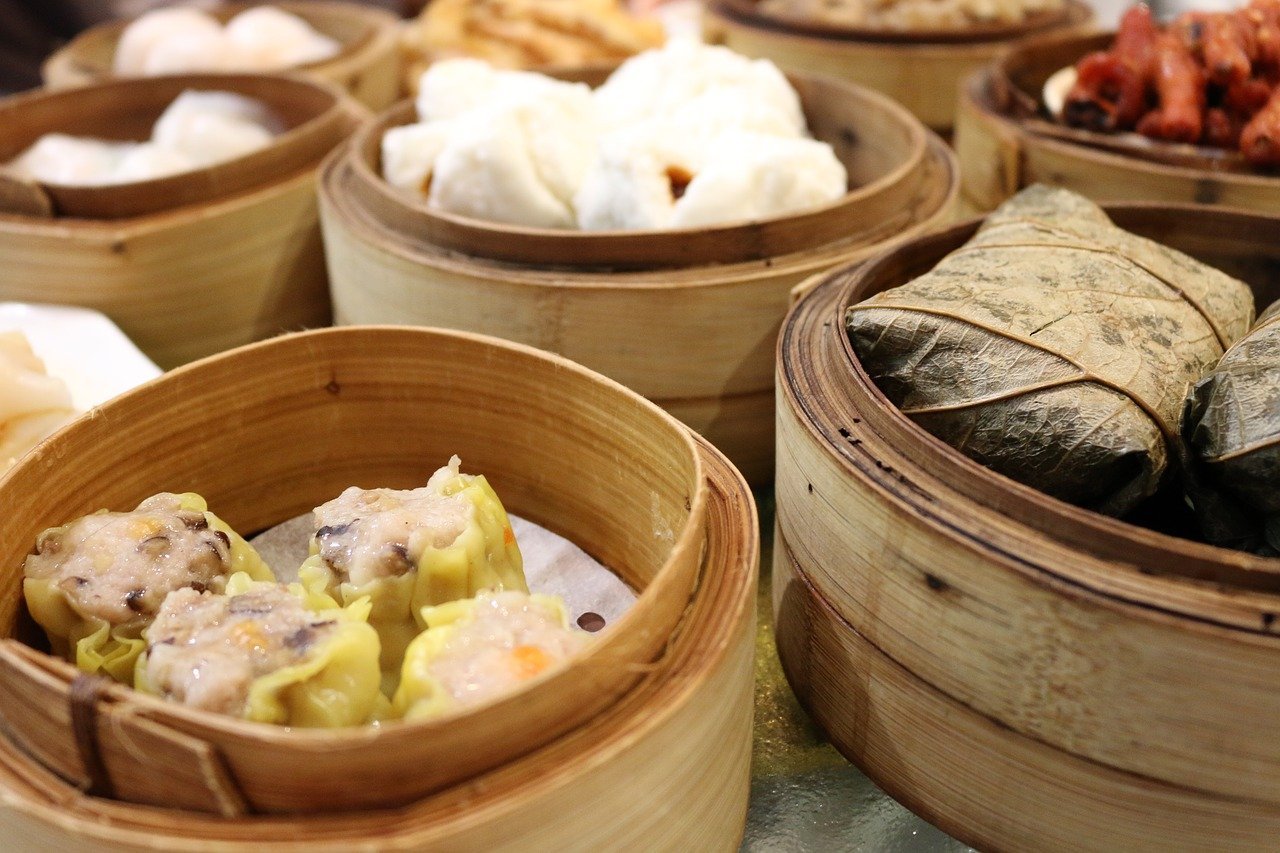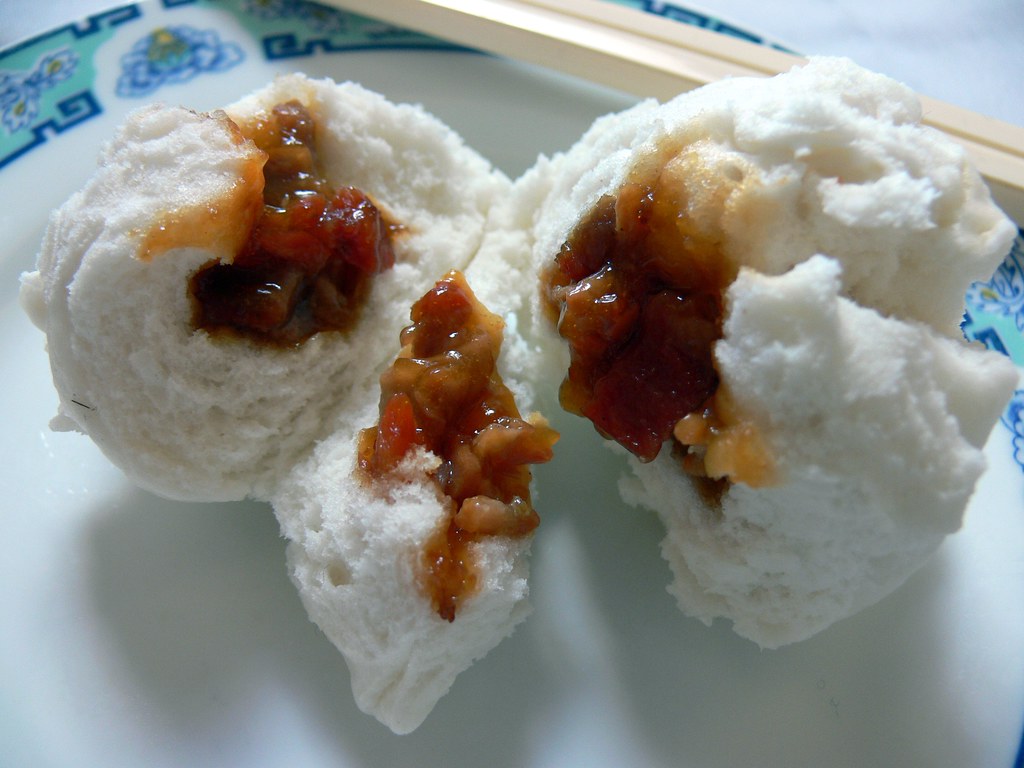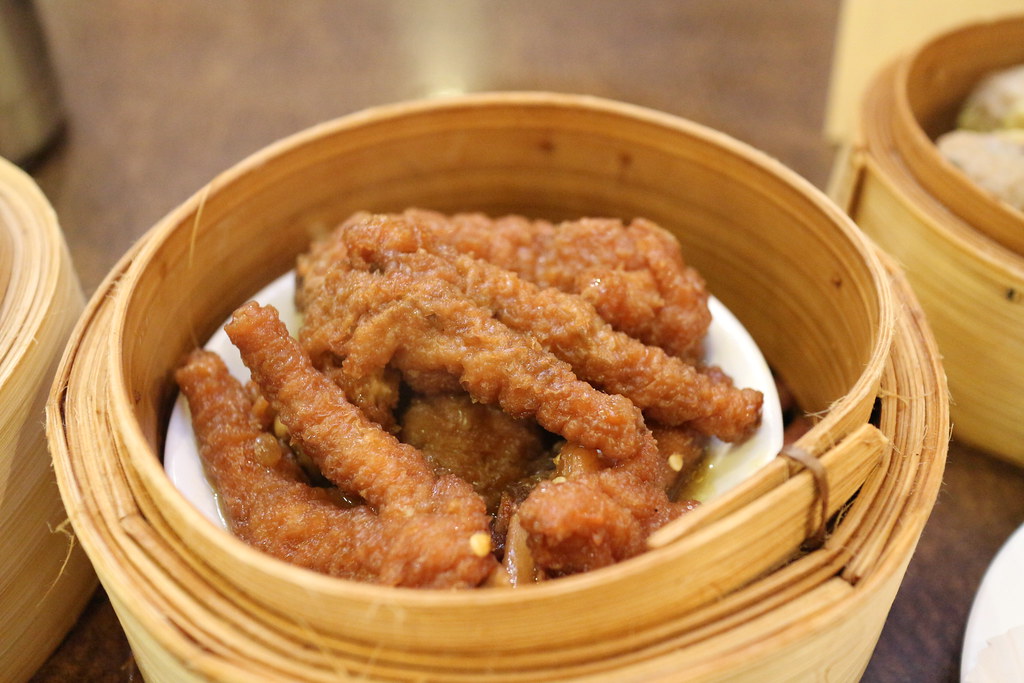Chinese dim sum today is one of the most popular dishes in the world, but history states that it was conceptualized in Guangdong in China and Hong Kong. Typically consumed while sipping on some tea, dim sums are small bite-sized dumplings. The dish is eaten mostly during brunch time and is enjoyed with friends and family, as family bonds are important to the Chinese.

What is Dim Sum?
According to history, when the government banned opium dens, travelers along the Silk Route in China would often halt at local teahouses to get some rest. The local farmers would also frequent these teahouses for a cup of good tea and have some conversation with the travelers who would stop there. Tea aids the process of digestion, and some small dishes, along with it, enhance the tea-drinking experience. This was the reason the teahouses started serving small snacks. Thus, was born the tradition of the dim sums, and the rest is history.
Today, Chinese dim sum dishes around the world have several variations and different fillings, including vegetarian versions, but the authentic dim sums are still the way to go in China.
How to order Dim Sum?
The Chinese Dim Sum is available everywhere, from small local shops to fancy restaurants. Although it is typically a brunch meal, it can be consumed anytime during the day. More and more people have started ordering them as entrees before a meal.
Since the culture of dim sums started with tea, the first step to ordering a dim sum is selecting a tea. The most common teas preferred are Oolong, Jasmine, Bo Lei, and Sau Mei. The person who is in the closest vicinity of the teapot is the one to pour the drink in everyone else’s cup before filling his own.
If your teapot requires a refill, you must take the lid off and let the pot rest at one side of the table. The waiters will know what you want and get you your refill. Then comes the fun part, ordering the dim sum. There is no dim sum menu. The waiters come out of the kitchen with carts, which are pushed around from table to table. You can survey a little and see what other tables are having before you decide what you want to have. You can choose your pick as the cart of dim sum dishes passes you, and the waiter will unload the dish on your table. They will then add the ones you have selected to your bill.
A lot of the fancier restaurants do not take this approach and take your order in advance from a dim sum menu. This approach, while not as much fun, helps prevent wastage from leftovers.
How to make Dim Sum?
Making a dim sum requires skill and patience, and home cooks start with just one or two fillings. The professional chefs in China sometimes take years to master the skill of making a dim sum.
There are six basic skills involved in making a dim sum:
- Preparation
- Rice noodle rolls, filled with meat
- Steaming
- Deep-frying
- Making the filling
- Making the dumpling with the dough

Restaurants typically follow an assembly line and divide the work among the teams. According to the history, Chinese cooking is the most diverse cooking and requires immense skill. A chef is judged in his dim sum making skills by tasting his shrimp dumplings, also known as ‘har gow’. They are the most difficult to master, as their dough is made from sticky rice flour and keeps on falling apart. The pleats along the outer edges of the dish denote how skilled the chef is, with 12 or more pleats indicating a master chef.
Eight popular Dim Sum dishes
Shrimp dumplings – har gow
The har gow, as mentioned above, is the toughest to make. It is also the most popular dish on the dim sum menu. It is served in a bamboo steamer, and the dish itself is a thin translucent coating filled with shrimp chunks.

Barbeque Pork Buns – Char siu bao
As the name suggests, these dumplings consist of barbeque sauce, along with shallots and pork, and they are either baked or steamed. This dish is very popular as a takeaway dish that people can eat on the go.

Rice Noodle Rolls- Cheung Fun
Rice noodles, one of the best and easiest dishes, are steamed and hand-rolled, then filled with shrimp, beef, pork, eggs, and sometimes with a non-meat filling such as fried dough. The dumpling is topped with soy sauce to enhance its taste.

Sui Mai
These dumplings are different from the others on the dim sum menu. The filling is usually exposed at the top, and the dumpling is basket-like. The filling is pork or shrimp, with a hint of fish or crab on top. These are served after steaming.

Mango Pudding
This is a dim sum dessert and is different from all other dumplings. With filling consisting of fresh and sweet mangoes, the pudding is a light and refreshing dish to end a meal.
Egg Tart
Another sweet dim sum dish, the mango tart, is a flaky pastry tart, filled with sweet custard, which is rich in texture. The origin of the egg custard occurred in Macau.

Soup dumplings
These dim sums are incredibly delicate and fragile. These are steamed and served in a bamboo steamer. The filling of the dumpling is a hot broth, along with some pork. The soup dumplings are famous throughout China, but they are especially popular in Shanghai.

Chicken Feet- Fung Jeow
One of the crispiest dishes, chicken feet can be ordered either deep-fried or stir-fried, based on your preference. The chicken is then marinated and steamed. The flavor of the dish comes from the marinade, which is essentially oyster sauce or black bean sauce.
